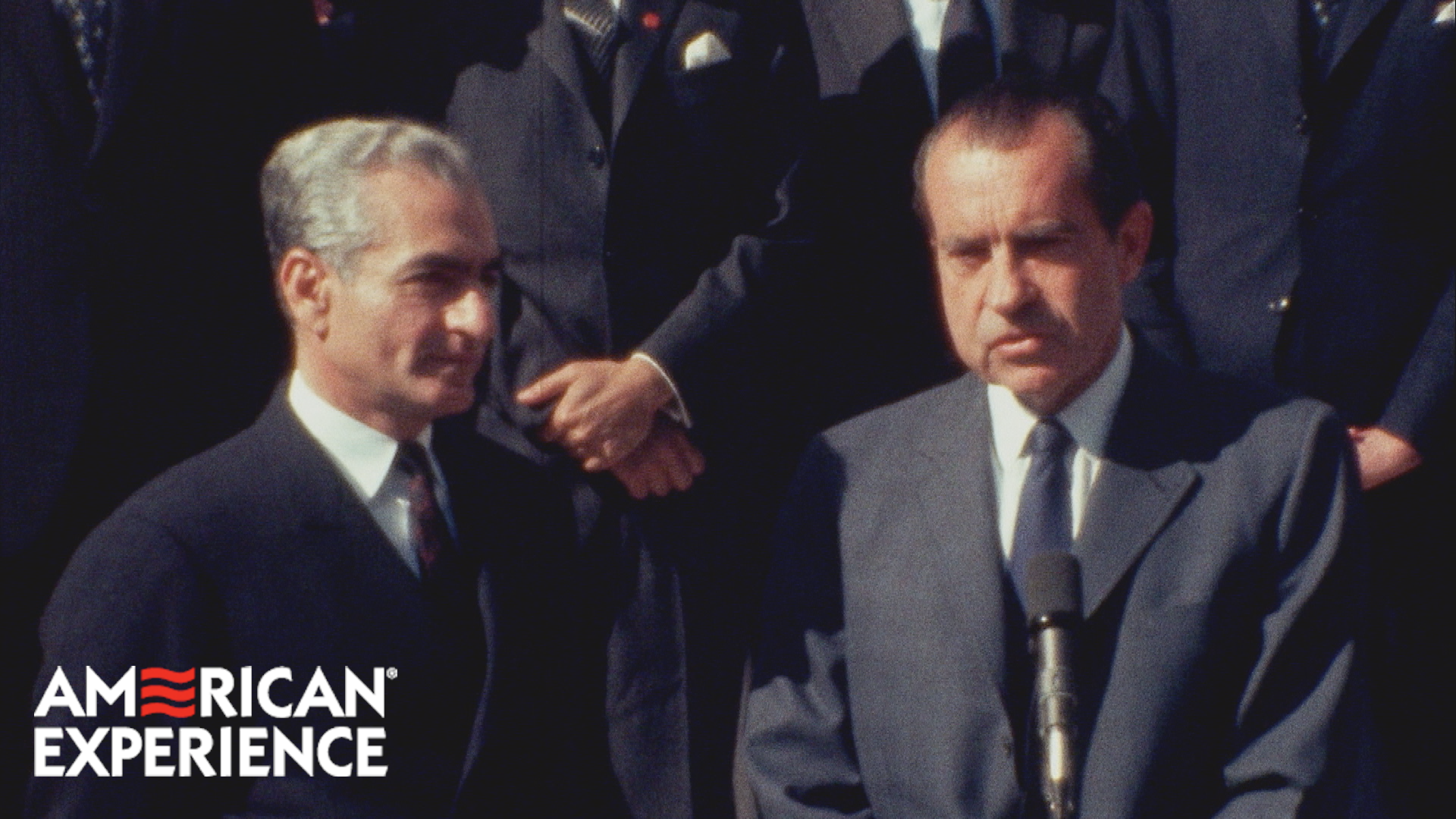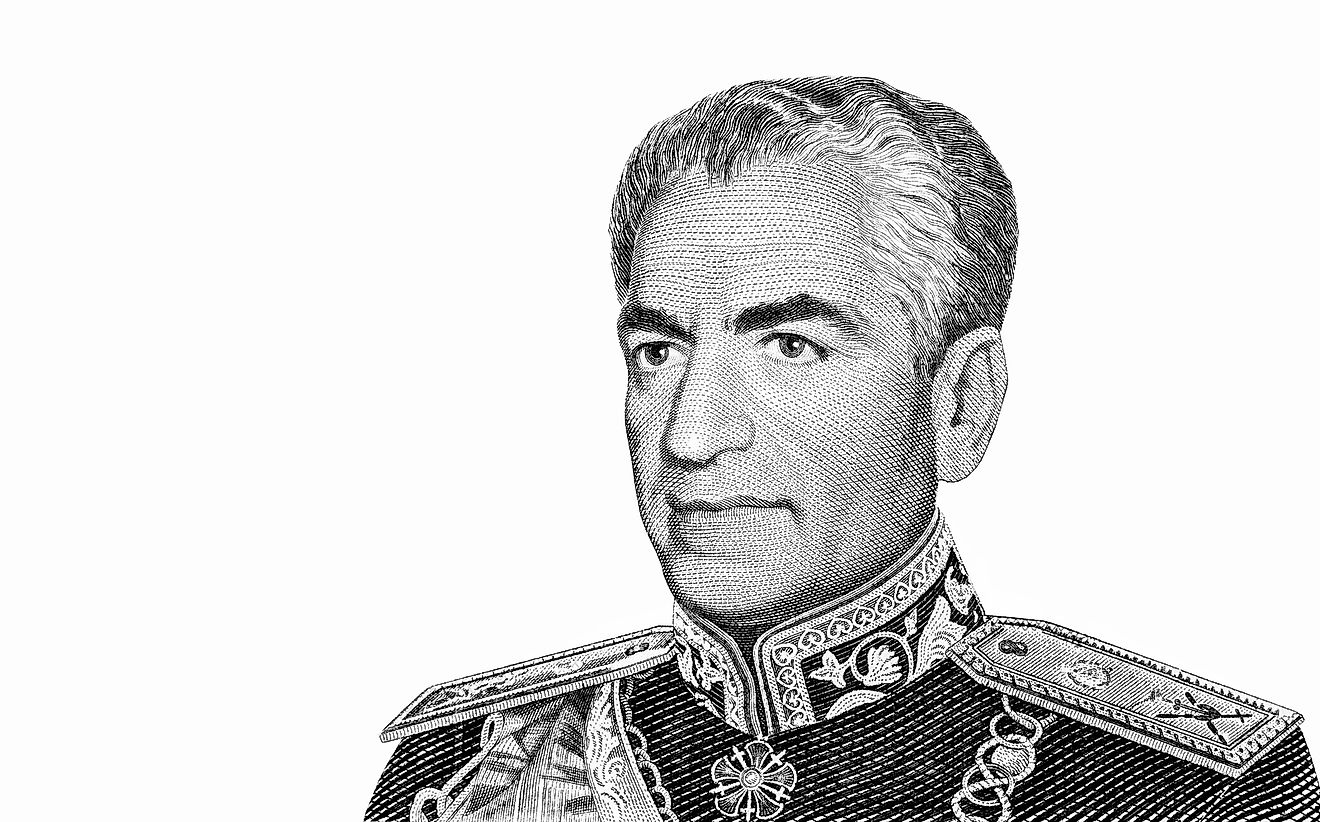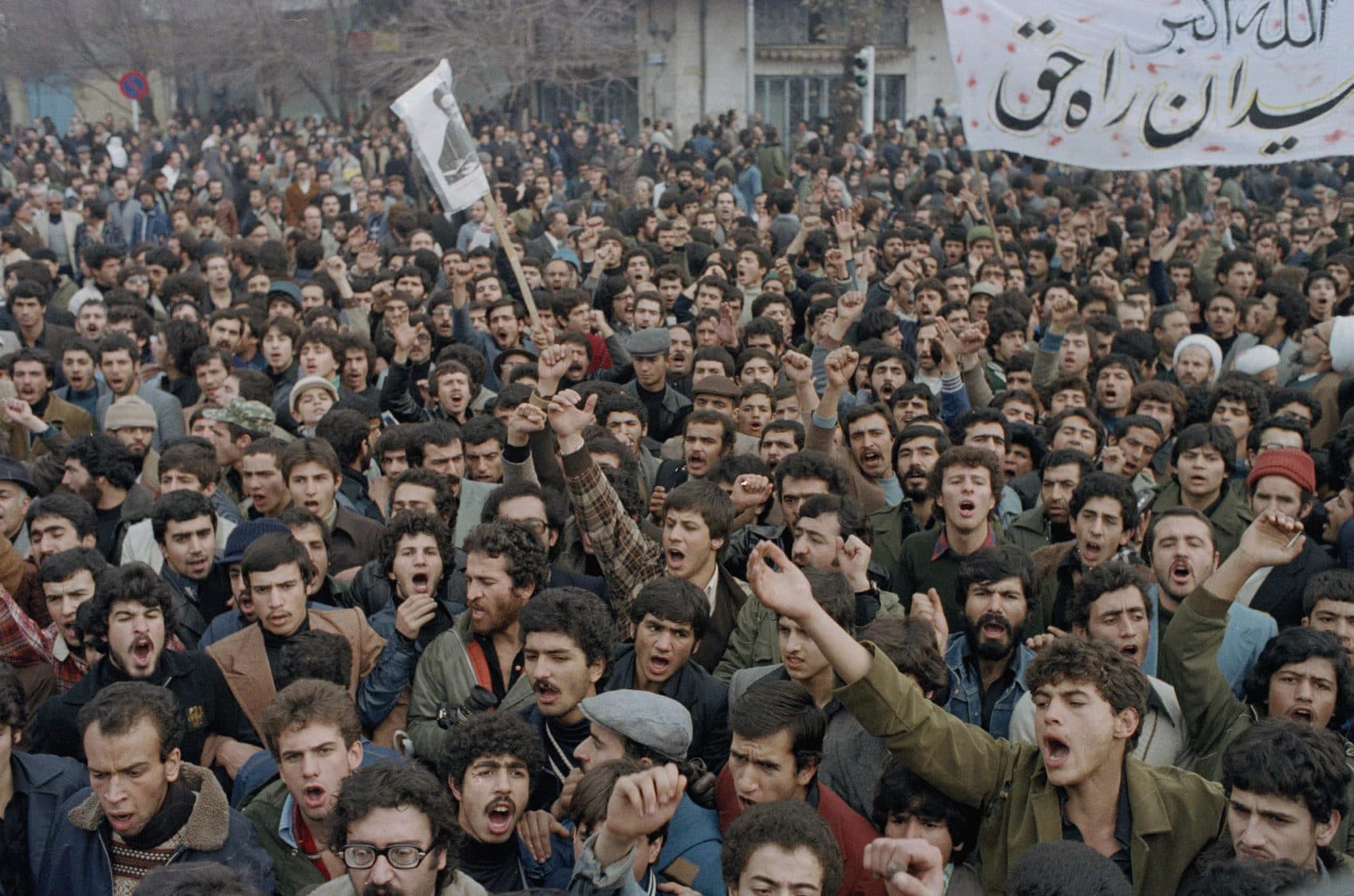Table of Contents
- Unpacking the Shah's Time in Iran
- Mohammad Reza Pahlavi - Personal Details
- Was the Shah of Iran a Good Leader - Looking Back at His Time?
- How Did People See the Shah's Leadership?
- What Was Life Like for Ordinary Iranians?
- Why Did Some People Oppose the Shah of Iran?
- Did the Shah's Rule Really Last?
- What Was the Real Problem with the Shah of Iran?
- The Shah's Legacy - Good or Bad for Iran?
- A Quick Recap
Unpacking the Shah's Time in Iran
The question of whether Iran's last shah, Mohammad Reza Pahlavi, was a force for good or ill continues to spark really lively conversations among those who study history, folks who look at political situations, and the Iranian community living outside their homeland. It's a complex story, to be honest, with lots of different angles to consider. People hold very strong feelings about it, and you know, that's completely understandable given the changes Iran went through.
Mohammad Reza Pahlavi, the person who sat on Iran's throne for nearly forty years, oversaw a time of huge shifts for his country. There was a lot of pushing to make things more modern, and then, eventually, a big uprising that changed everything. His time as ruler, marked by some really big plans for change, left a lasting mark on Iran, and you see, people still talk about it quite a bit today, trying to figure out what it all meant.
Some people, for example, will tell you that Reza Shah, his father, actually pulled Iran back from some pretty bad spots that had come about under the previous rulers, the Qajars. They say you sort of have to look at him through the perspective of the time he lived in, and not really hold him up against how things are today. For that period, it's almost like they'd say he was a decent leader, which, you know, is a particular way of looking at it.
- Emma Anthurium
- Tennessee Brando Biography
- Xxx Anjali Arora Viral Video
- Anjali Arora Viral Xxx Video
- Aditi Mistry Live Porn
Mohammad Reza Pahlavi - Personal Details
Let's just take a moment to look at some of the personal facts about Mohammad Reza Pahlavi, the person at the center of all this discussion. He came into the world on a specific day, and you know, his family had some interesting ideas about what that meant for his future.
| Full Name | Mohammad Reza Pahlavi |
| Born | October 26, 1919 |
| Father's Origin | Mazandarani (born in Alasht, Savadkuh County, Māzandarān Province) |
| Family Life Note | His father, Reza Khan, was very happy about having a boy to carry on the family name, even though Mohammad Reza had a twin sister, Ashraf. His father quickly called him his favorite child and, like, a "bird of good omen," though that prediction, apparently, didn't quite come true in the long run. |
So, you see, from the very start, there were these expectations, this kind of hope, tied to his birth. It's almost like he was set up to carry a certain weight, a kind of destiny, from the very beginning of his life, which is, in a way, pretty interesting to consider.
Was the Shah of Iran a Good Leader - Looking Back at His Time?
When we think about whether the Shah was a good leader, it's really important to put ourselves in the shoes of someone living back then. You know, before the rise of the Ayatollah, Mohammad Reza Shah had made some pretty big moves in trying to bring Iran into the modern world. He pushed for changes that, to some, seemed to be pulling the country forward, which, you know, was a big deal for many people at that time. He was, in a way, someone who wanted to see his country stand tall on the global stage.
However, it's also true that he was, essentially, a ruler who held all the power, and he had a secret police force that was, well, quite scary. People didn't always feel free to speak their minds, you see, and that's a significant part of his rule. But, on the other hand, he was also one of the few leaders in the Muslim world who had, like, unofficial connections with Israel as early as the 1950s, which, in some respects, shows a certain kind of practical approach to foreign relations that was pretty unique for his time.
How Did People See the Shah's Leadership?
The way people saw the Shah's leadership was, frankly, very divided, especially within places like the embassy. Some people there, for instance, really focused on how important Iran was as a friend to the United States. They saw Iran as a really strong fighting force in the area and a major provider of oil, which, you know, was a huge point for them. To these folks, the Shah's rule meant stability and a reliable partner, which, in a way, was very appealing for international relations.
But then, there were others who had some really serious worries about Iran's future because of some clear weaknesses in the Shah's government. They saw a lot of money going to the wrong places, a lot of people being held down, and the presence of a really harsh secret police. These concerns, you know, made them wonder if the country was truly on a good path, and they expressed that pretty openly, which, as a matter of fact, shows the different views at the time.
One person, for example, felt that the Shah wasn't, like, a truly evil person, but he definitely wasn't a saint either. To this individual, Mohammad Reza Pahlavi was just a typical leader from the Cold War period, someone who, you know, had some good ideas about what he wanted to do. This perspective suggests a more balanced view, seeing him as a product of his time, with all the ups and downs that came with that kind of rule, which is, in some respects, a common way to look at historical figures.
What Was Life Like for Ordinary Iranians?
By the 1970s, there were, like, many clear reasons why people in Iran were speaking out against and finding fault with the Shah. You see, a lot of people, including religious leaders, were really critical of the Shah's way of living, which was full of wealth and luxury. While he was living this very grand life, many, many Iranians were still quite poor, and a lot of villages, like, didn't even have proper roads, clean water, or electricity, which, you know, made daily life very difficult for them.
Iranian society was, basically, very uneven. The richest tenth of the population, for instance, spent a really big chunk of Iran's money, something like 37.9% of the country's total spending. This kind of difference, you know, between the very rich and the very poor, created a lot of bad feelings and a sense of unfairness among the people. It's almost like two different worlds existed within the same country, which, in a way, led to a lot of tension.
The Shah, Mohammad Reza Pahlavi, was often seen in official settings, like posing in Iran's parliament building in 1954, trying to show a picture of progress. Yet, his attempts to bring the country into the modern era were, like, often met with strong disapproval from religious figures and other people who wanted change. They felt that his modernizing steps were, in fact, going against the traditional ways or simply not helping the majority of people, which, to be honest, was a big point of disagreement.
Why Did Some People Oppose the Shah of Iran?
There's something, you know, truly captivating about the story of Iran's last Shah, Mohammad Reza Pahlavi. He was, apparently, seen by some as not very strong and easily influenced, surrounded by people who just told him what he wanted to hear and others who were always scheming. He was, in some respects, beholden to foreign powers, which, you know, meant he often had to do what other countries wanted, rather than what was best for his own people. This made him seem, to many, like he wasn't truly independent, which, as a matter of fact, was a big source of frustration.
In one personal view, the single biggest sign that the Shah's rule didn't quite work out was that it just didn't stand the test of time. That is, if he was really, truly good at his job, he would have been able to keep things steady and avoid a huge uprising. Making something that looks good for a little while but then completely falls apart in the long run is, basically, pointless. This perspective suggests that the ultimate measure of a leader is whether their system can last, and his, apparently, couldn't, which, you know, is a pretty strong argument.
The idea that his father, Reza Shah, actually saved Iran from the really bad situations that had come about under the Qajar rulers is something some people will tell you. They point to those early improvements as a sign of what good leadership could do. However, when it came to Mohammad Reza, the question of whether his rule was a force for good or bad is, you know, still something that sparks really passionate arguments among people who study history and those who look at how countries work, which, in a way, shows just how complicated his legacy is.
Did the Shah's Rule Really Last?
Mohammad Reza Pahlavi, the last person to sit on Iran's throne, ruled for nearly four decades. During this time, he oversaw a period of really big changes, attempts to make the country more modern, and then, as we know, a revolution that completely changed everything. His time as ruler, marked by some very big plans for change, ultimately led to a situation where the system he built didn't hold up. This, you know, is a central point when people talk about his leadership, as it raises questions about the lasting impact of his actions.
There's a feeling among some people that society, like, lost a certain level of respect after the monarchy fell. They might point to a time when there was a clear order, or perhaps a different kind of national pride, that they feel is now gone. This perception, you see, of a kind of decline in societal values or structure, is a part of the conversation about what happened after the Shah left, which, in some respects, speaks to the emotional impact of such a big change.
Even more than three decades after Mohammad Reza Shah Pahlavi's death, and despite, like, constant official efforts to make him look bad, people still talk about him. This shows that his memory, good or bad, is still very much alive in the minds of many. It's almost like he continues to be a central figure in discussions about Iran's past and its path forward, which, you know, is a testament to the profound effect he had on the country.
What Was the Real Problem with the Shah of Iran?
The question of whether the Iranian revolution was good or bad for Iran is, you know, a huge one, and it really gets to the heart of what went wrong for the Shah. While some believe Iran needs a change in its system of government, others think that simply aiming for that isn't enough. They feel that the main goal should be to limit Iran's ability to, like, cause harm to other nations, which, to be honest, shifts the focus from internal politics to external actions. This shows that the problems weren't just about the Shah himself, but also about how Iran fit into the wider world.
Some Iranians genuinely believe the Shah did what he intended to do relatively well. They might point to certain improvements or developments during his time. Others feel that the good things the Shah did, you know, simply outweigh the bad. They focus on the positive aspects of his rule, seeing them as more significant than the negative ones. And then, there are those Iranians who, basically, believe the Shah did almost nothing wrong at all, seeing his actions as entirely justified or beneficial. These varying views, you see, really highlight the complexity of judging his time in power.
There's also an opinion that life under the Shah, as published in the Harvard Crimson, was, indeed, a very strange time. It was seen as a period when the Shah, who was, like, the head of one of the world's most brutal and controlling states, still managed to have a presence on the international stage. This perspective suggests that despite his efforts to modernize, the underlying nature of his rule was, in fact, quite harsh, which, you know, is a critical point for many who look back at that era.
The Shah's Legacy - Good or Bad for Iran?
The discussion about the Shah's legacy, whether it was ultimately a force for good or something less positive for Iran, is, you know, still very much an open one. His reign brought about a lot of changes, some of which were clearly aimed at bringing Iran into the modern age, but these changes also came with significant challenges and, as we've seen, ultimately led to a complete overhaul of the country's system of government. It's almost like he set a series of dominoes in motion, and the final one was the revolution, which, to be honest, changed everything for Iran.
People often talk about the different sides of his rule. On one hand, there were efforts to build up the country, to improve infrastructure, and to, like, increase Iran's standing in the world. On the other hand, there were clear issues with how power was held, with money going to the wrong places, and with people not having the freedom to express themselves. These two sides, you see, make it very hard to give a simple answer to whether his time was "good" or "bad." It's a bit of both, depending on what you focus on, and who you ask, which, you know, is typical for such a long and impactful period of history.
The ongoing debate, therefore, isn't just about historical facts; it's also about how those facts are felt and interpreted by different groups of people, both inside Iran and among those who have left. The memory of the Shah, his actions, and the consequences of his rule continue to shape current conversations about Iran's direction and its place in the world. It's a story that, apparently, isn't finished being told, and its various parts continue to spark very strong feelings, which, in a way, is what makes it so enduringly interesting.
A Quick Recap
This article has looked at the reign of Mohammad Reza Pahlavi, the last Shah of Iran, considering the different views on whether his rule was beneficial or not. We touched upon how his father, Reza Shah, was seen as having saved Iran in his time. We also explored the divided opinions on the Shah's leadership, including concerns about corruption and repression, alongside views of him as a strong partner. We considered what life was like for many ordinary Iranians, highlighting the inequalities and the criticisms of his modernization efforts. Lastly, we discussed why his rule ultimately did not last, leading to a revolution, and how his legacy continues to be debated by many today.
Related Resources:



Detail Author:
- Name : Cydney Kovacek
- Username : dayne76
- Email : carlee.zboncak@wisoky.com
- Birthdate : 1989-04-15
- Address : 372 Antonio Villages West Eugenia, VA 30917
- Phone : (681) 581-7860
- Company : Hessel, Schowalter and Larson
- Job : Extruding and Drawing Machine Operator
- Bio : Rerum sint sit ut reprehenderit. Quia commodi maiores velit et omnis minus. Et qui esse dicta repudiandae mollitia maxime doloremque.
Socials
linkedin:
- url : https://linkedin.com/in/haags
- username : haags
- bio : Quidem similique iusto ullam voluptatum.
- followers : 3755
- following : 1841
instagram:
- url : https://instagram.com/haag1980
- username : haag1980
- bio : Qui recusandae quasi ab. Et molestias consequatur est minus autem.
- followers : 1510
- following : 1161
twitter:
- url : https://twitter.com/sidney_haag
- username : sidney_haag
- bio : Sunt quo quae deserunt perspiciatis. Ab facilis eius assumenda et voluptatibus. Qui adipisci dolores aut ut dolorum qui.
- followers : 3918
- following : 987
tiktok:
- url : https://tiktok.com/@sidney.haag
- username : sidney.haag
- bio : Facere mollitia aut ea ratione officia illum facilis.
- followers : 1960
- following : 436